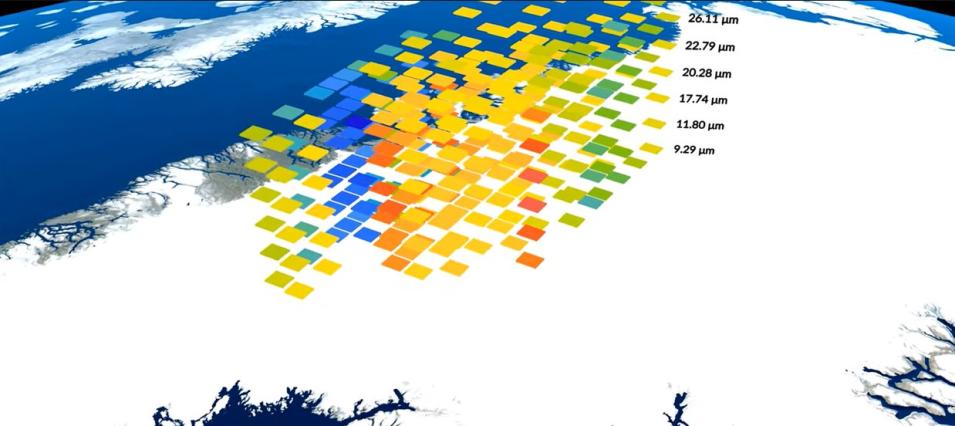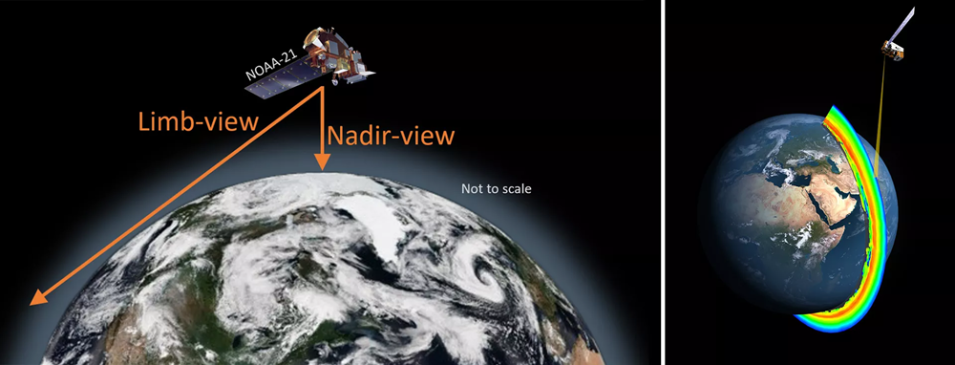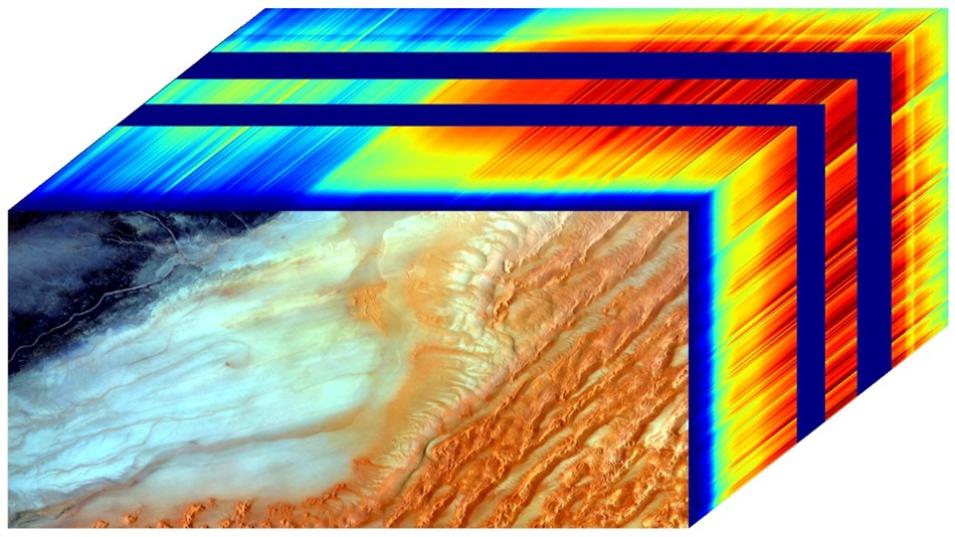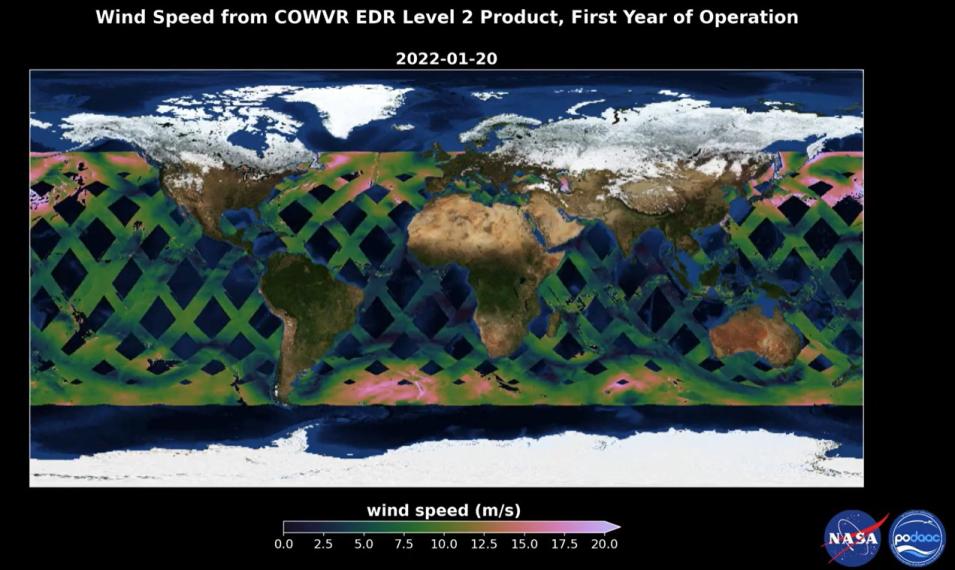Now Available: Land Use and Land Cover Change Projection in the ABoVE Domain Dataset
The Land Use and Land Cover Change Projection in the Arctic Boreal Vulnerability Experiment (ABoVE) Domain dataset is now available. This dataset provides projections of land use and land cover (LULC) change within the ABoVE domain from 2015 to 2100, with a spatial resolution of 0.25 degrees. It includes LULC change under two Shared Socioeconomic Pathways (SSP126 and SSP585) derived from the Global Change Analysis Model (GCAM) at an annual scale. The data were generated by integrating regional LULC projections from GCAM with high-resolution MODIS land cover data and applying two alternative spatial downscaling models (Future Land Use Simulation [FLUS] and Demeter). Data are provided in netCDF format.
Access LULC Projection data and more information
MODIS-Derived Annual Vegetation Resilience, 2000-2019 Dataset Released
The MODIS-derived Annual Vegetation Resilience, 2000-2019 dataset provides estimates of vegetation resilience in the ABoVE core domain at annual time steps from 2000 to 2019 at 300-meter spatial resolution. Vegetation resilience is defined as the recovery rate from deviations (due to climate perturbations or disturbances) to the equilibrium state. The mapped vegetation resilience was derived from Terra MODIS Enhanced Vegetation Index products across 175 ABoVE B grid tiles over the ABoVE core domain. The estimated mean resilience, upper boundary, and lower boundary results are provided for each tile in COG format.
Access MODIS-derived vegetation resilience dataset and more information
ABoVE: AVIRIS-NG Imaging Spectroscopy for Alaska, Canada, and Iceland Dataset
The AVIRIS-NG Imaging Spectroscopy for Alaska, Canada, and Iceland, 2017-2022, Version 3 dataset from the ABoVE campaign is now available. This dataset supersedes the previously published ABoVE AVIRIS-NG Level 2 surface reflectance files for the 2017-2019 surveys of Alaska and northwestern Canada. It also includes previously unpublished Level 1 radiance and Level 2 reflectance data for the 2021 surveys in Iceland, when COVID-era policies prevented normal ABoVE flights, and the 2022 surveys, which returned to the ABoVE domain. The dataset comprises ~1,700 individual flight lines covering ~120,000 square kilometers with a nominal spatial resolution of 5 meters. Sampling includes individual transects to capture key gradients like the tundra-taiga ecotone and raster maps of key study areas like the Canadian High Arctic Research Station (CHARS) Greiner watershed, the Mackenzie Delta, and the Utqiagvik/Point Barrow area. This dataset represents one part of a multi-sensor airborne sampling campaign conducted by 11 aircraft teams for ABoVE. The imagery data are provided in ENVI format along with an RGB composite image for each flight line and shapefiles showing imagery boundaries.
Access ABoVE Alaska, Canada, Iceland data and more information
SHIFT: AVIRIS-NG Level 2A Unrectified Surface Reflectance Version 1 Dataset Released
The AVIRIS-NG Level 2A Unrectified Surface Reflectance Version 1 Dataset from the Surface Biology and Geology High-Frequency Time Series (SHIFT) campaign is now available. This dataset contains Level 2A unrectified surface reflectance images from the AVIRIS-NG instrument collected as part of the SHIFT campaign, which occurred February to May 2022, with a follow-up activity for one week in September.
The SHIFT campaign leveraged NASA's AVIRIS-NG instrument to collect Visible to Shortwave Infrared (VSWIR) data at approximately a weekly cadence across a broad study area, enabling traceability analyses related to the science value of VSWIR revisits. Ultimately, this campaign will generate precise, high-frequency data on plant communities collected over nearly 1,656 square kilometers across Santa Barbara County, California, and nearby coastal Pacific waters. The AVIRIS-NG Level 2A data are provided in ENVI binary format, which includes a flat binary file accompanied by a header (.hdr) file holding metadata in text format.
Access SHIFT dataset and more information
BOREAS AVIRIS At-Sensor Radiance Imagery Dataset Available
The BOREAS RSS-18 Level 1B AVIRIS At-Sensor Radiance Imagery Dataset offers Level 1B AVIRIS radiance data near Prince Albert, Saskatchewan, Canada, on August 14, 1996. The imagery was acquired for the Boreal Ecosystem-Atmosphere Study (BOREAS) project, which enlisted NASA's ER-2 high altitude aircraft in an effort to better understand exchanges of radiative energy, sensible heat, water, carbon dioxide, and trace gases between Canada's boreal forest and the lower atmosphere. These spectra are acquired as images with 20-meter spatial resolution, 11-kilometer (km) swath width, and flight lines up to 800 km in length. The dataset includes the radiance imagery cube for each scene along with calibration and navigation information. The radiance data are in instrument coordinates, georeferenced by center of each scan line, and provided in a binary file. Metadata are included in a mixture of binary and text file formats.
Access BOREAS dataset and more information
Physical Oceanography DAAC (PO.DAAC)
New COWVR-TEMPEST Products Released
NASA’s PO.DAAC released the Compact Ocean Wind Vector Radiometer (COWVR)-Temporal Experiment for Storms and Tropical Systems (TEMPEST) Temperature Sensor Data Records (TSDRs) and Environmental Data Record (EDR) produced by NASA's Jet Propulsion Laboratory. COWVR and TEMPEST are passive microwave radiometers installed on the International Space Station as part of the Space Test Program-Houston 8 (STP-H8) technology demonstration mission. The project aims to demonstrate a lower-cost, lighter-weight sensor architecture for providing microwave data, with the primary objective of ocean surface vector wind products and tropical cyclone intensity tracking for the Department of Defense.
The datasets include Level 1 TSDRs from both instruments and Level 2 wind vector, column liquid water, and column precipitable water vapor from COWVR (EDR). Data records span January 2022 to the present, with forward streaming planned at least until August 2025. Both Level 1 and Level 2 data provide data over the platform tracks/swaths in HDF5 format. Version 10.0 is the first unrestricted public release of these data, and its name is consistent with the internal version numbering of the project team prior to release.
Access COWVR-TEMPEST products and more information




